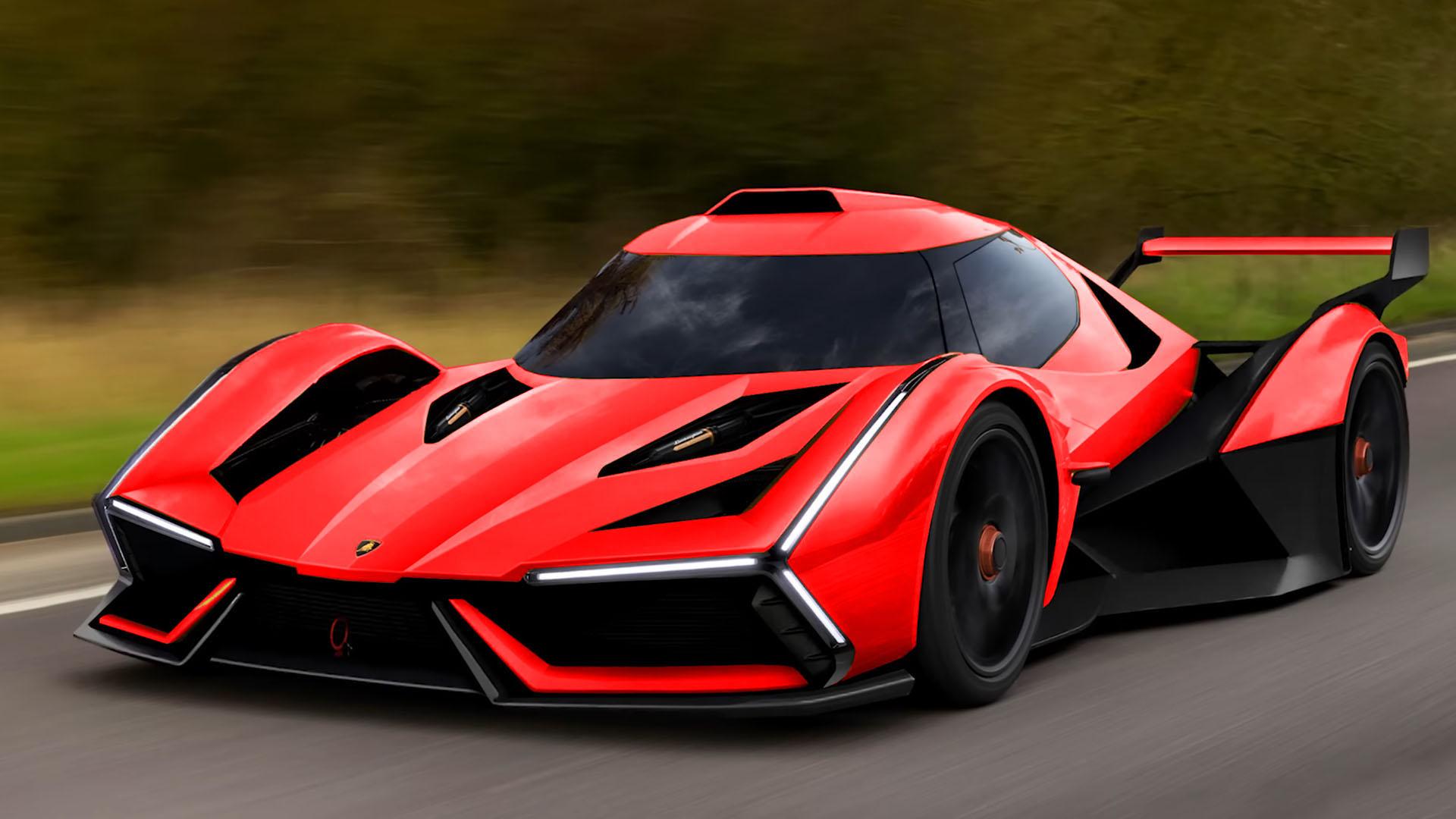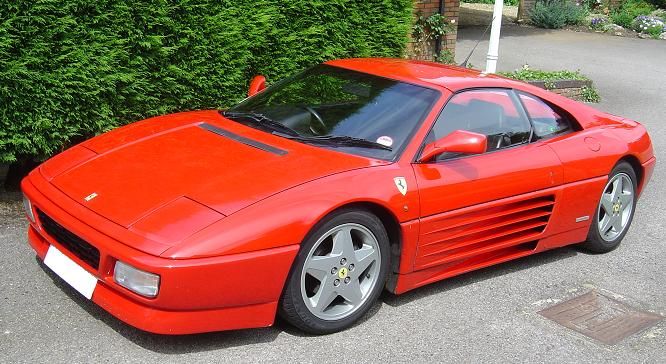
The automotive landscape, with its glossy unveilings and fervent rivalries, often shines its brightest spotlight on a select few names. For decades, the iconic prancing horse badge of Ferrari has been synonymous with apex performance, breathtaking design, and undeniable prestige. Maranello’s masterpieces routinely capture the imagination, gracing magazine covers and fueling countless debates among enthusiasts about the pinnacle of speed and luxury, yet this widespread recognition often overshadows other equally remarkable machines.
Yet, beneath this well-lit stage, a fascinating and often untold narrative unfolds. Lurking in the shadows are extraordinary supercars that possessed the sheer power, engineering precision, and pulse-pounding speed to give even Ferrari’s finest a serious scare. These machines were not merely contenders; some were lightning quick off the line, while others mastered corners with balletic grace, pushing the boundaries of what was thought possible in automotive engineering.
Despite their undeniable talent and sometimes groundbreaking innovations, these unsung heroes often missed the fame they deserved, slipping under the radar while the spotlight remained firmly fixed on the usual stars. They were quietly brilliant and brutally fast, often redefining performance benchmarks with audacious approaches or sheer brute force. This deep dive aims to pull back the curtain on the first seven of these phenomenal machines, celebrating their forgotten legacies and the incredible feats they accomplished without receiving their rightful due.

1. **Noble M600**: The Noble M600 emerged from a tiny British workshop as a hand-built masterpiece, embodying raw, unfiltered speed. It packed a twin-turbo Volvo V8 engine, pushing an astonishing 650 horsepower to the wheels. Crucially, it did so with zero electronic nannies—no traction control, no stability systems to intervene. This meant pure, unadulterated power directly translated to the road, demanding ultimate skill and focus from its pilot. Its uncompromising nature allowed it to embarrass Italian exotics.
The numbers themselves spoke volumes about its capability: a blistering 0-60 mph time of just 3 seconds flat, and a top speed soaring over 225 mph. Despite these world-beating figures, its production numbers remained akin to a rare coin collection, ensuring its exclusivity but also contributing to its relative anonymity. The M600 stands as a testament to the power of focused, artisanal engineering over mass-market appeal, proving that true driving exhilaration can thrive outside the mainstream.
Read more about: Journey into Rarity: Uncovering the World’s Most Exclusive Car Engines and Models
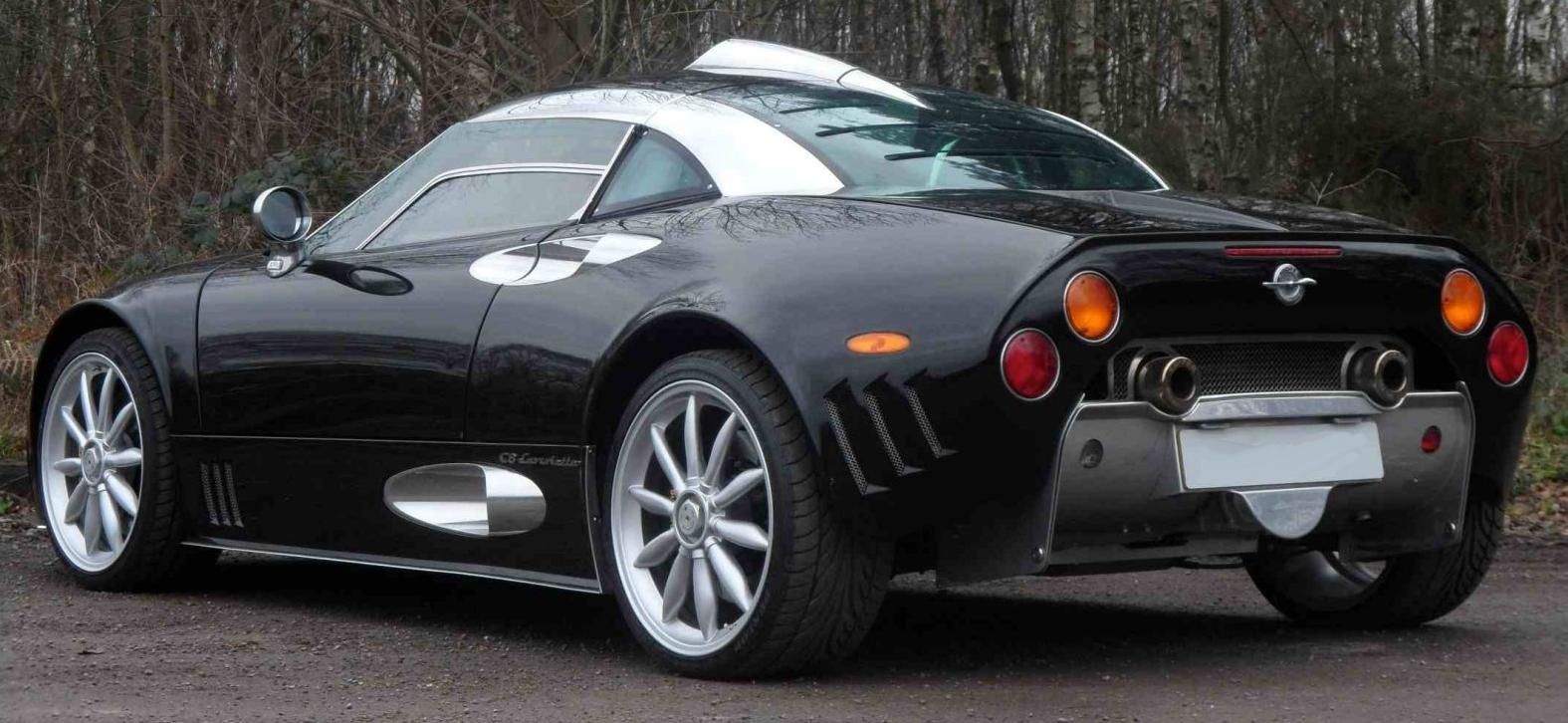
2. **Spyker C8**: From the Netherlands emerged the Spyker C8, a supercar that transcended mere automotive design to become a piece of mechanical jewelry. Crafted by aircraft enthusiasts, its unique aesthetic immediately turned heads, not just for its striking exterior but for its meticulously exposed polished aluminum shifter mechanism, visible inside the cabin. The entire interior echoed fighter plane inspirations, featuring toggle switches and a dashboard that would make any pilot jealous, blurring the lines between aviation and automotive.
Beneath its intricate facade, the Spyker C8 was a serious performance machine, featuring an Audi-sourced V8 that sang like an opera star. More than just a pretty face, this Dutch masterpiece proved its mettle on the track, notably beating Ferrari’s lap times at various circuits. This demonstrated a capability that far outstripped its public recognition, solidifying its place among the elite. Despite its track-proven performance, the C8 remained automotive caviar, too exotic and niche for mainstream fame.
Car Model Information: 2006 Spyker C8 Spyder
Name: Spyker C8
Caption: 2009 Spyker C8 Spyder
Manufacturer: Spyker Cars
Production: 2000–present
Assembly: Zeewolde
Predecessor: Spyker Silvestris V8
Doors: Scissor doors
Designer: Maarten de Bruijn
Class: Sports car
Layout: Rear mid-engine, rear-wheel drive layout
BodyStyle: convertible (car)
Engine: BMW,V8 engine
Powerout: convert
Transmission: Manual transmission,ZF Friedrichshafen
Length: convert
Width: convert
Height: convert
Wheelbase: convert
Weight: convert
Categories: 24 Hours of Le Mans race cars, Articles with short description, Cars introduced in 2000, Commons category link from Wikidata, Convertibles
Summary: The Spyker C8 is a sports car produced by the Dutch automaker Spyker Cars since 2000. The design takes visual cues from the 1999 Spyker Silvestris V8 prototype but with changes to the proportions.
Get more information about: Spyker C8
Buying a high-performing used car >>>
Brand: Spyker Model: C8
Price: $374,900 Mileage: 28,112 mi.
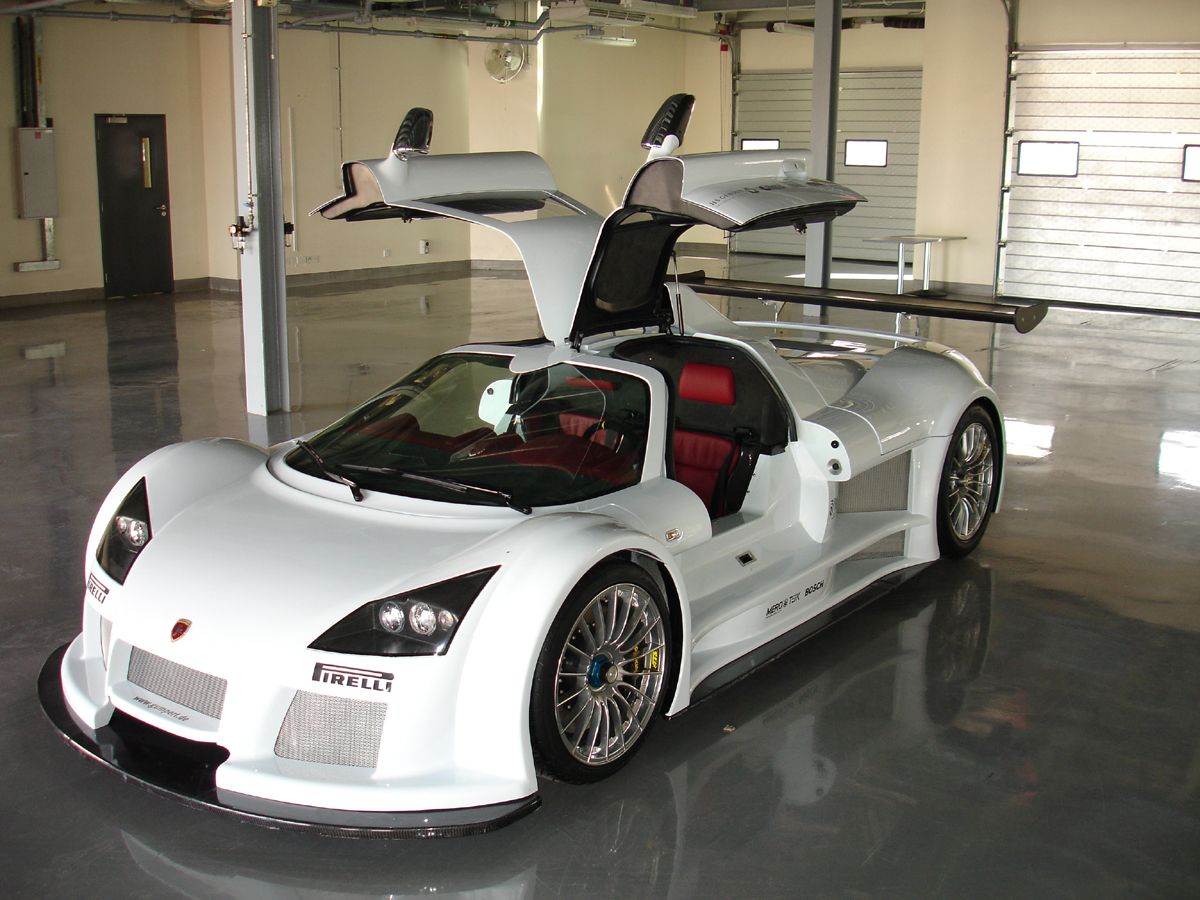
3. **Gumpert Apollo**: In the supercar beauty contest, the Gumpert Apollo would likely lose every time, as its form was brutally murdered by function. Designed by Roland Gumpert, an ex-Audi Sport director, this German monster had one overarching goal: to destroy track records. Its aerodynamics were so extreme you could theoretically drive it upside down at high speeds, a testament to its single-minded pursuit of efficiency over aesthetics.
This uncompromising design was backed by formidable power: a twin-turbo Audi V8 cranking out a staggering 650 horsepower. What made this even more astonishing was its weight—or lack thereof—as the entire package weighed less than a Civic. This incredible power-to-weight ratio translated into blistering performance, allowing it to hit 60 mph in a mere 2.7 seconds. For many Ferrari owners, the sight of this awkward-looking beast disappearing into the horizon must have been quite the shock, proving that true speed needs no conventional beauty.
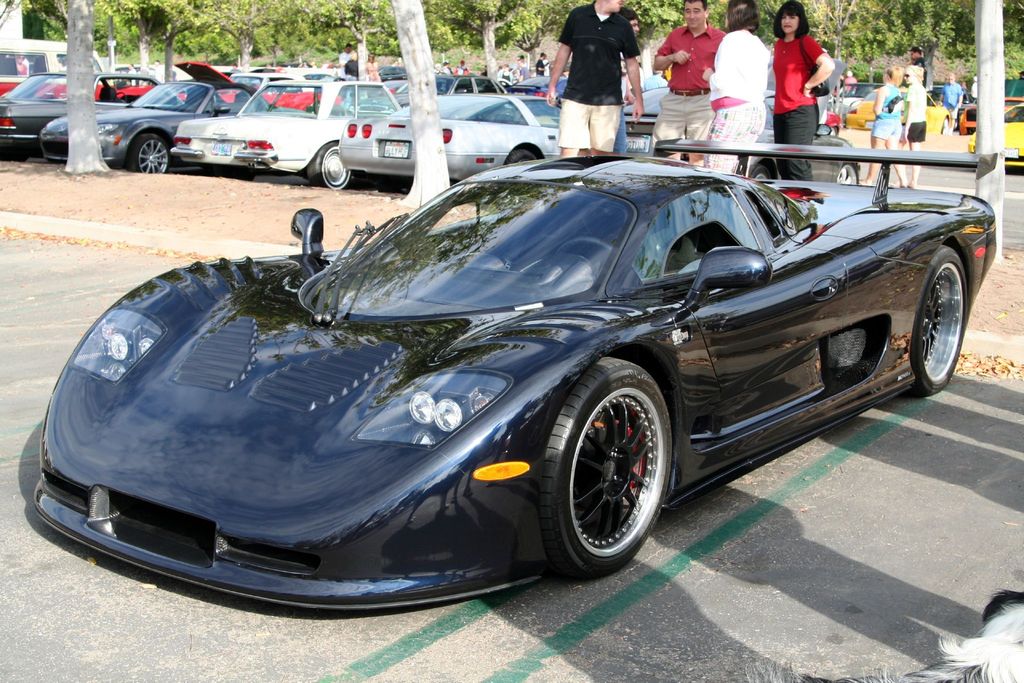
4. **Mosler MT900S**: Warren Mosler didn’t just build cars; he engineered physics-defying weapons. From a modest Florida workshop, far removed from the glossy European factories, emerged the Mosler MT900S—a carbon fiber spaceship designed for demolishing track records. This American masterpiece was a stark contrast to its European counterparts, achieving superior performance without the benefit of a fancy marketing budget or centuries-old heritage.
The MT900S was an exercise in extreme lightweighting and potent power, weighing in at a mere 2,500 pounds—lighter than a Toyota Corolla. Yet, it packed a formidable 600-horsepower Corvette engine positioned strategically behind the driver. This combination of minimal mass and immense power created a machine that was not only incredibly fast but also exceptionally agile. Jay Leno, a seasoned automotive connoisseur, proclaimed it “the best handling car I’ve ever driven,” yet it remained virtually unknown outside hardcore enthusiast circles.
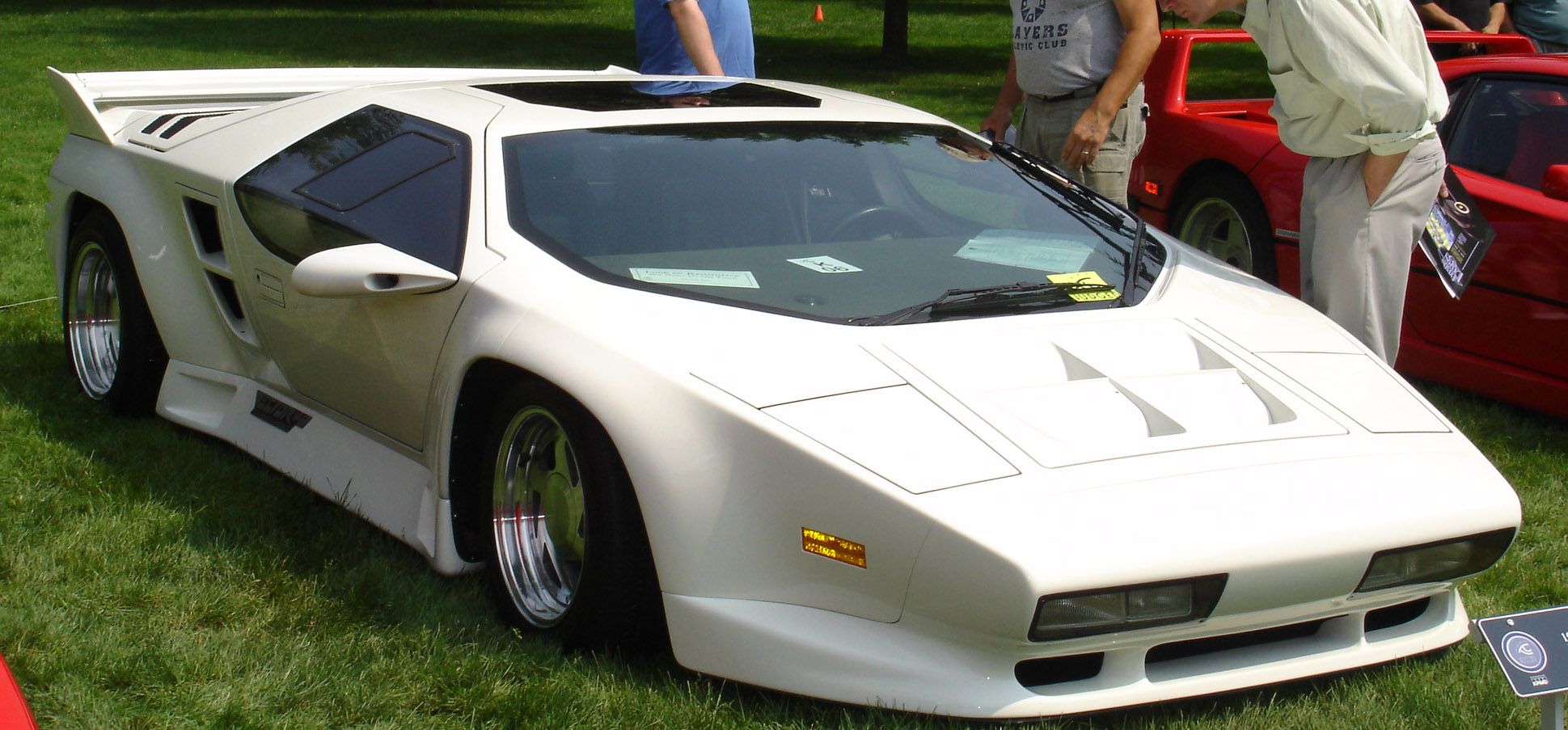
5. **Vector W8**: Long before electric hypercars captivated the imagination, Jerry Wiegert was creating automotive science fiction with the Vector W8. This wedge-shaped alien spacecraft, delivered in 1990, boasted a twin-turbo V8 engine producing an astounding 625 horsepower—a truly groundbreaking figure considering Ferrari’s flagship made only 478 horsepower at the time. It was a technological marvel, assembled using aerospace-grade materials and techniques.
Its cockpit, with its array of aircraft gauges, looked like something plucked directly from Star Trek, immersing the driver in a truly futuristic experience. This wasn’t just about speed; it was about an entire philosophy of advanced engineering and design. However, only 17 examples ever escaped into the wild before the company unfortunately imploded, limiting its impact and recognition. Each Vector was a legend, a jaw-dropping sight at rare car shows, showcasing audacious American innovation that challenged the established order.
Read more about: Sig Sauer P322 Review: Why This Feature-Packed .22 is a Hit
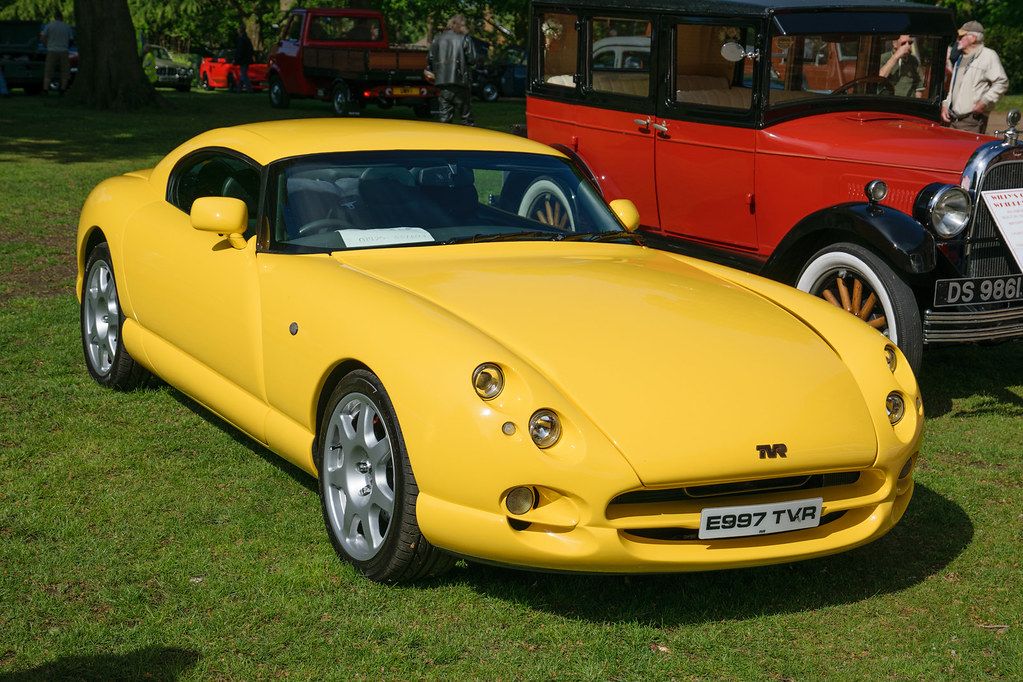
6. **TVR Cerbera Speed 12**: The TVR Cerbera Speed 12 was a beast so untamed that the company itself canceled its street production, deeming it “simply too powerful to be driven by most people.” The heart of this British monster was a homemade V12 engine, rumored to churn out over 800 horsepower. This raw power, combined with an incredibly light chassis—weighing less than a Miata—meant the Speed 12 could demolish supercars costing three times as much.
It offered a pure, unadulterated driving experience, devoid of any driver aids whatsoever, demanding absolute skill and courage. The ultimate irony lies in its aborted destiny, as TVR refused to sell the completed prototypes to customers, fearing inevitable headline-making crashes. It remains the ultimate “what could have been” supercar, a legend whispered among those who recognize its incredible, untamed potential and its ability to outclass its more famous counterparts, had it ever truly been unleashed.
Car Model Information: 2024 Genesis GV70 2.5T AWD
Name: TVR Cerbera Speed 12
Manufacturer: TVR
Aka: TVR Project 7/12
Production: 1996–1998,3 produced
Assembly: Blackpool,England
Class: Sports car
BodyStyle: Coupé
Layout: Front-engine, rear-wheel-drive layout
Engine: cvt,TVR Speed Twelve engine,V12 engine
Transmission: manual transmission
Wheelbase: 2640 mm
Abbr: on
Length: 4360 mm
Width: 1960 mm
Height: 1130 mm
Weight: 1100 kg
Related: TVR Cerbera
Designer: Chris Stallard, Darren Hobbs
Sp: uk
Categories: Articles with short description, Commons category link from Wikidata, Coupés, Rear-wheel-drive vehicles, Short description matches Wikidata
Summary: The TVR Cerbera Speed 12, originally known as the Project 7/12, is a sports car designed by TVR in 1997. Based on the TVR Cerbera, the vehicle was intended to be both the world’s fastest road car and the basis for a GT1 class endurance racer. However, problems during its development, changing GT1 class regulations and the eventual decision that it was simply incapable of being used as a road car forced TVR executives to abandon its development.
The engine, displacing 7.7 L (469.9 cu in) and having twelve cylinders, was reportedly capable of producing nearly 1,000 hp (746 kW), although an exact measurement was never made. Nonetheless, it was claimed to have a top speed greater than that of the McLaren F1.
Get more information about: TVR Cerbera Speed 12
Buying a high-performing used car >>>
Brand: TVR Model: Cerbera Speed 12
Price: $39,995 Mileage: 20,074 mi.
Read more about: 15 Iconic British Sports Cars: Power, Style, and Thrill
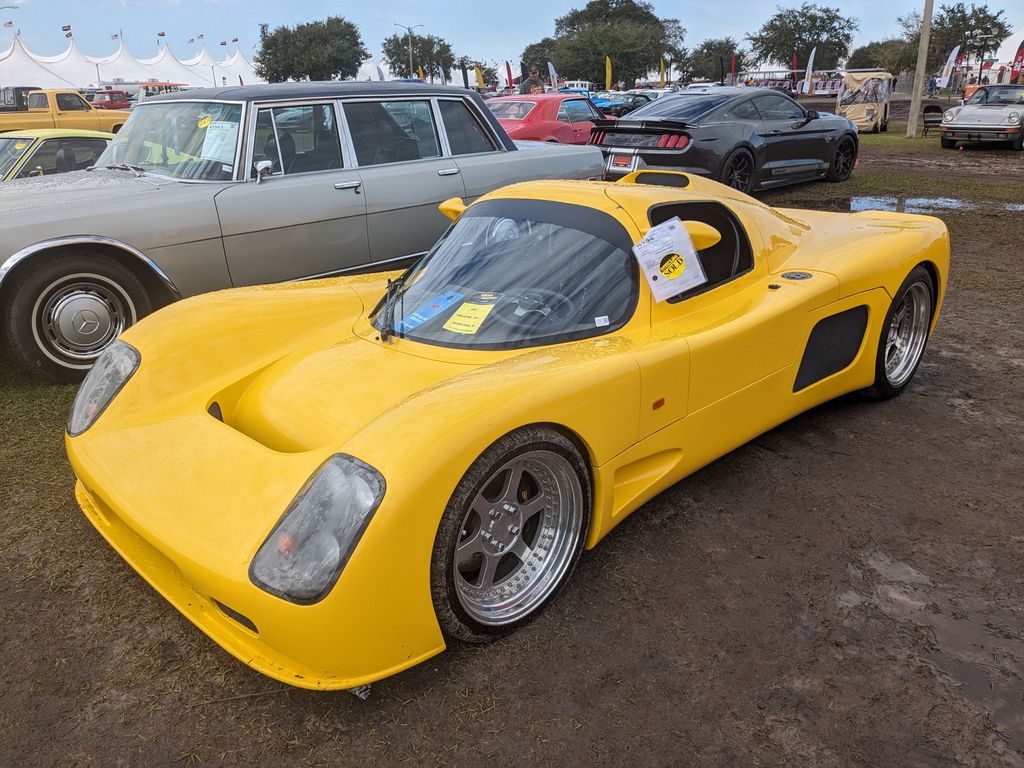
7. **Ultima GTR**: The Ultima GTR’s journey from a kit car to a giant-destroyer is a testament to ingenuity over immense budgets. What began as a project enthusiasts could build in their garages transformed into a bare-bones British rocket capable of embarrassing hypercars costing millions. It was the ultimate sleeper, a vehicle no one saw coming but one that left an indelible mark on the record books with its performance.
The GTR famously held the production car acceleration record, showcasing its incredible potency with a neck-snapping 0-100-0 mph time of just 9.4 seconds. This was achieved through a simple yet effective formula: a small-block Chevy V8 mounted midship, nestled within an ultra-lightweight chassis, creating an extraordinary power-to-weight ratio. It also demolished Nürburgring lap records, all while costing a mere fraction of Italian exotics, embodying raw, uncompromised performance achieved through passion.
The journey into the automotive shadows continues as we pull back the curtain on more hidden marvels that, despite their astonishing capabilities, never quite stepped into the limelight so often dominated by Ferrari. These machines weren’t just fast; they were engineering statements, born from audacious visions and often pushing boundaries in ways the mainstream overlooked. Their stories are a testament to innovation thriving outside the usual spotlight, revealing the often-unseen facets of hypercar history where brilliance met obscurity.
Read more about: Unveiling Automotive Legends: The 15 Most Expensive and Rarest Cars in the World (2025 Edition)
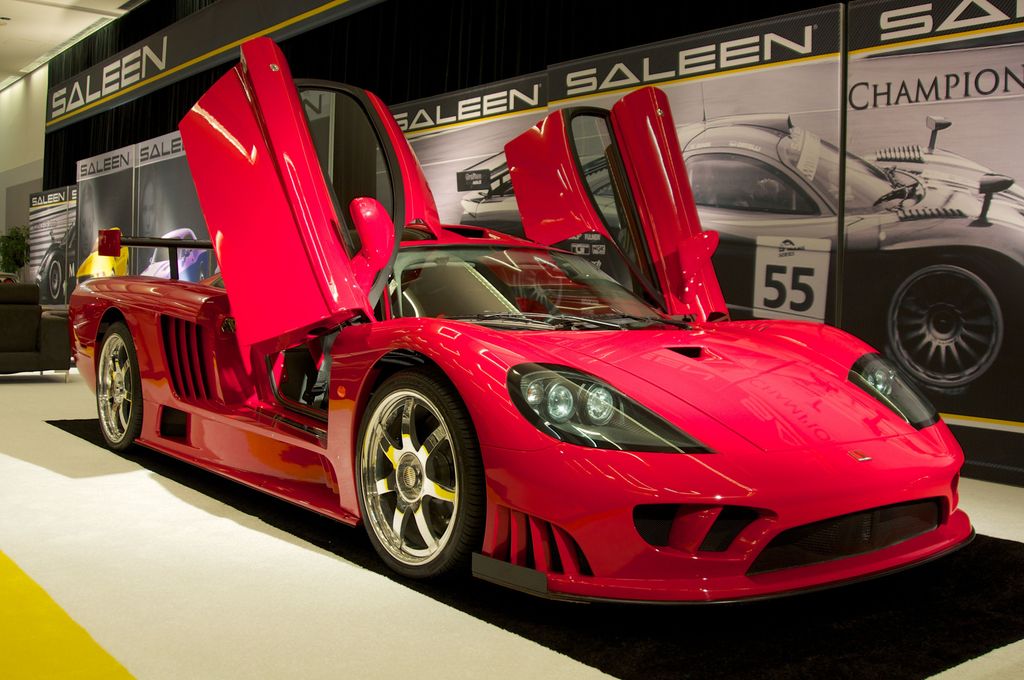
8. **Saleen S7**: Born from racing legend Steve Saleen’s ambition to conquer European dominance, the Saleen S7 was a testament to American ingenuity. Handcrafted in California, it featured a sophisticated space-frame chassis adorned with a sleek carbon fiber body, a design choice that not only enhanced its aesthetic appeal but also contributed significantly to its performance capabilities. Powering this beast was a twin-turbo Ford V8 engine, unleashing a staggering 750 horsepower to the rear wheels, a figure that placed it squarely in the upper echelons of supercar performance at the time.
The S7’s dramatic upward-swinging doors and its luxurious leather-trimmed interior hinted at its premium status, but it was its otherworldly performance that truly defined it. Accelerating from 0 to 60 mph in a blistering 2.8 seconds, the S7 was a force to be reckoned with on any tarmac. Despite its appearances in high-profile Hollywood blockbusters like “Bruce Almighty,” and its undeniable raw speed, the Saleen S7 struggled to achieve the same widespread brand recognition and cultural cachet enjoyed by its more established Italian rivals, remaining a connoisseur’s secret rather than a household name.
Read more about: The Real Stars? 23 Iconic Cars That Made Movie History
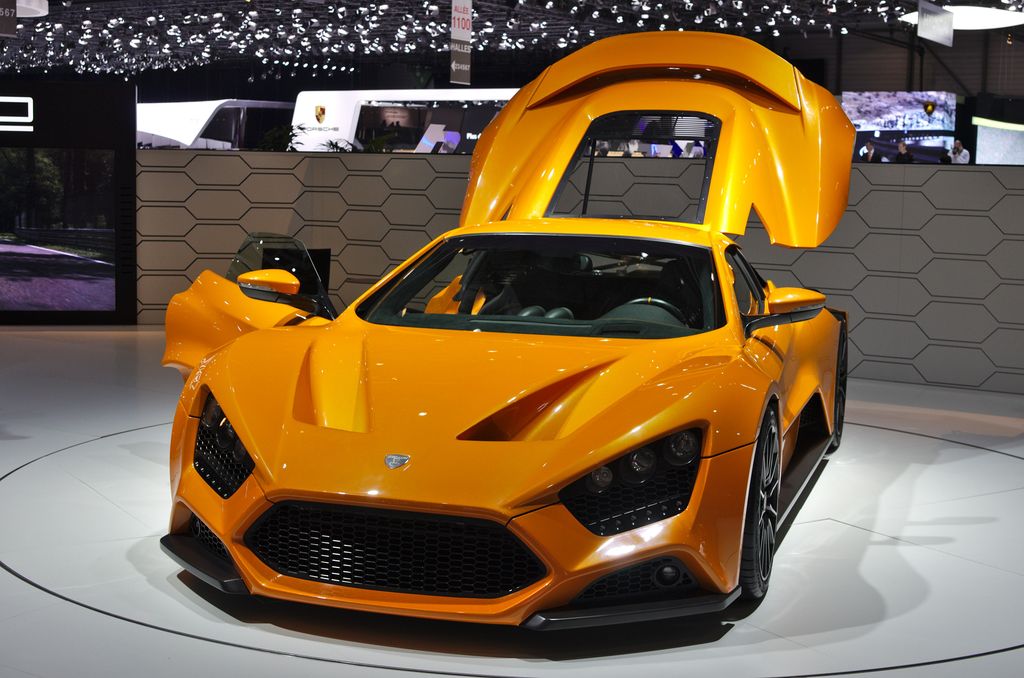
9. **Zenvo ST1**: Emerging from Denmark, a nation not typically associated with high-performance automotive manufacturing, the Zenvo ST1 blindsided the global automotive community with its unyielding approach to performance. At its heart lay a formidable twin-charged 7.0-liter V8 engine—a remarkable combination of both supercharging and turbocharging—which collectively generated an astonishing 1,104 horsepower. This brute force was channeled through a meticulous hand-built process, with each individual ST1 requiring an astounding 8,000 man-hours to construct.
Beyond its raw power, the ST1 showcased unique engineering innovations, perhaps most notably its active rear wing. This ingenious feature had the remarkable ability to tilt sideways during cornering, dynamically adjusting to provide additional downforce precisely when needed. While the Zenvo ST1 could, on paper, decisively embarrass many Ferraris, its extremely limited production numbers, combined with an infamous incident involving a fire on Top Gear, regrettably conspired to keep this Danish hypercar largely confined to the realm of relative obscurity, known only to a select few hardcore enthusiasts.
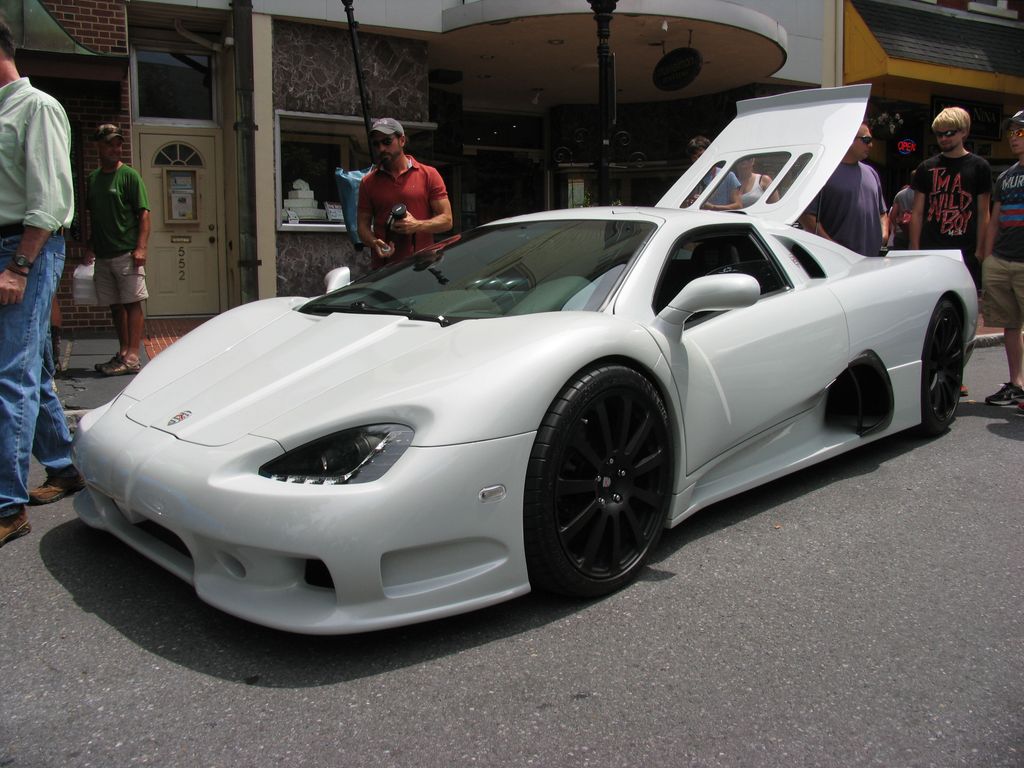
10. **SSC Ultimate Aero**: For a glorious three-year span, from 2007 to 2010, the crown for the world’s fastest production car resided not in Europe, but in Washington state, courtesy of the SSC Ultimate Aero. This remarkable machine achieved a verified top speed of 256.18 mph, a feat accomplished without the backing of a legendary automotive nameplate or the vast resources of a massive engineering team. Jerod Shelby, its visionary creator (with no relation to the iconic Carroll Shelby), brought this twin-turbo V8 monster to life from a relatively small facility with just a handful of dedicated employees, a testament to focused ingenuity.
The Ultimate Aero was a true driver’s car, devoid of complex electronic driver aids, putting its immense power directly into the hands of the pilot. With 1,287 horsepower propelling a mere 2,750 pounds, it offered an automotive experience akin to riding a guided missile – raw, visceral, and breathtakingly fast. Its record-breaking speed emphatically challenged the established hierarchy, forcing even the most ardent Ferrari loyalists to acknowledge its prowess. Yet, despite holding the ultimate bragging right, the Ultimate Aero never quite permeated mainstream consciousness, its legendary status confined largely to the annals of performance record books.
Car Model Information: 2024 Genesis GV70 2.5T AWD
Manufacturer: SSC North America
Production: 2004–2013
Successor: SSC Tuatara
Doors: Butterfly doors
Engine: ubl
Motor: 2 liquid-cooled electric motors (Ultimate Aero EV)
Transmission: automatic transmission
Class: Sports car
BodyStyle: coupé
Layout: Rear mid-engine, rear-wheel-drive layout
Length: 4475 mm
Abbr: on
Width: 2100 mm
Height: 1092 mm
Weight: convert
Sp: uk
Categories: 2000s cars, 2010s cars, All Wikipedia articles in need of updating, All articles with dead external links, All articles with unsourced statements
Summary: The SSC Ultimate Aero is a mid-engined sports car that was produced by SSC North America (formerly known as Shelby SuperCars) from 2004 until 2013. The SSC Ultimate Aero held the world production car speed record title, according to the Guinness World Records, from 2007 (when it was officially timed at 255 mph, 410 km/h) until the introduction of the Bugatti Veyron Super Sport in 2010. In April 2013, the Guinness World Records temporarily disqualified the Veyron’s record time for a period of five days due to concerns about electronic speed limiting changing the function of the car, but after investigation reinstated the Veyron as the record holder.
The SSC Ultimate Aero was not sold with electronic driver aids such as an anti-lock braking system or traction control system, as according to Jerod Shelby (no relation to Carroll Shelby), “Early design philosophy on the car was to make it a driver’s car. I wanted a car that you not only throttled with your right foot but at times you could steer with your right foot and a sensor.”
Get more information about: SSC Ultimate Aero
Buying a high-performing used car >>>
Brand: SSC Model: Ultimate Aero
Price: $39,995 Mileage: 20,074 mi.
Read more about: Unveiling California’s Enduring Grandeur: A Journey Through History, Innovation, and Natural Wonders
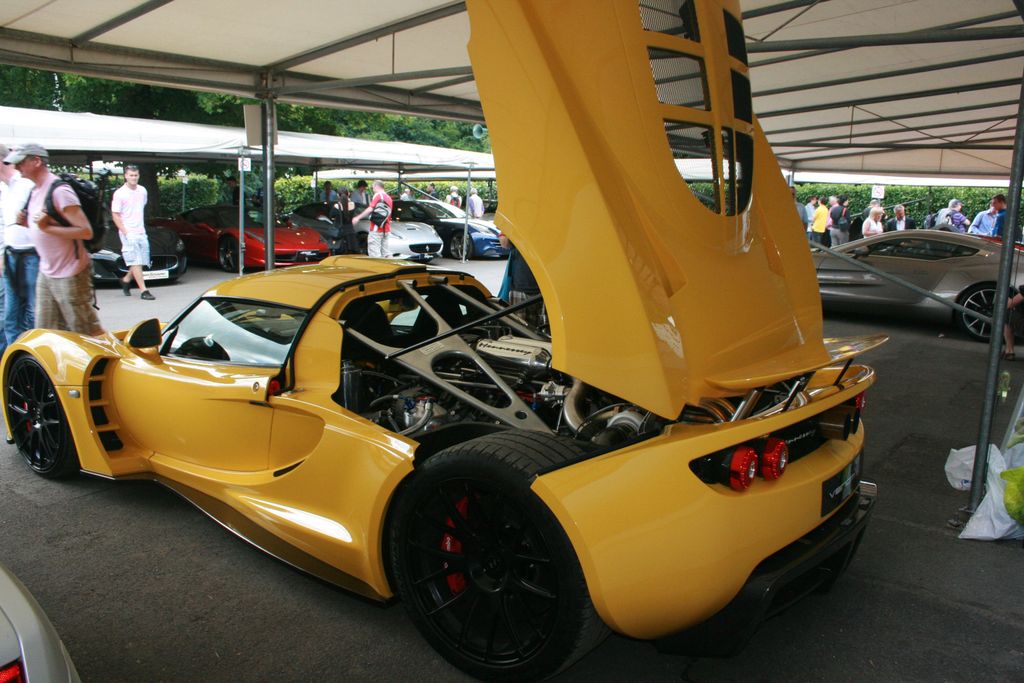
11. **Hennessey Venom GT**: John Hennessey, a name long synonymous with turning already fast American muscle into absolute speed demons, ventured into hypercar territory with the Hennessey Venom GT. This engineering marvel began its life with a humble Lotus Elise chassis, which Hennessey’s team then ingeniously stretched and meticulously engineered to accommodate a monstrous 7.0-liter twin-turbo V8 engine, churning out an astounding 1,244 horsepower. The result was a vehicle capable of mind-bending acceleration, rocketing from 0 to 200 mph faster than most conventional sports cars could even hit 60 mph.
In 2014, the Venom GT emphatically demonstrated its capabilities by reaching an incredible 270.49 mph at the Kennedy Space Center. Though official record books, due to a technicality regarding the number of runs, controversially snubbed this achievement, its raw speed was undeniable, showcasing its ability to outpace even Bugatti’s Veyron. Produced in extremely limited numbers, with only 13 examples ever built in a Texas workshop more renowned for tuning Mustangs and Camaros, the Hennessey Venom GT remains an underground legend, a formidable disruptor that proved sheer American ingenuity could challenge, and often surpass, the world’s most celebrated hypercars.
Car Model Information: 2024 Genesis GV70 2.5T AWD
Name: Hennessey Venom GT
Manufacturer: Hennessey Performance Engineering
Production: 13 units,(7 Coupes and 6 Spyders)
ModelYears: 2011–2017
Assembly: RAF Hethel,Sealy, Texas
Class: Sports car
BodyStyle: coupe
Related: Lotus Elise,Lotus Exige
Layout: Longitudinal engine,Rear mid-engine, rear-wheel-drive layout
Engine: 427 cuin
Abbr: on
Transmission: Ricardo plc,manual transmission
Wheelbase: Convert
Length: Convert
Width: Convert
Height: Convert
Weight: 2743 lb
Successor: Hennessey Venom F5
Categories: Articles with short description, Cars introduced in 2010, Commons category link is on Wikidata, Hennessey vehicles, Pages with non-numeric formatnum arguments
Summary: The Hennessey Venom GT is a high performance sports car manufactured by US manufacturer Hennessey Performance Engineering. The Venom GT is based on the Lotus Elise/Exige.
Get more information about: Hennessey Venom GT
Buying a high-performing used car >>>
Brand: Hennessey Model: Venom GT
Price: $39,995 Mileage: 20,074 mi.
Read more about: The Unstoppable Charge: Car and Driver’s Definitive List of 2025’s Quickest Cars (So Far)

12. **Wiesmann GT MF5**: The Wiesmann GT MF5 presented a fascinating automotive contradiction, marrying a distinctly retro aesthetic with cutting-edge German performance. Its design, reminiscent of something plucked from a 1950s sci-fi film, belied the formidable power lurking beneath its elegant curves. Under its hood lay BMW’s legendary V10 engine, sourced directly from the revered M5 and M6 models, a powerplant that delivered immense thrust and an unmistakable auditory symphony that car enthusiasts still recount in hushed, reverent tones.
Hand-built in a factory uniquely shaped like the company’s gecko logo, each GT MF5 was a bespoke creation, requiring a meticulous six weeks to complete. This artisanal approach resulted in a vehicle with perfect 50:50 weight distribution, an engineering feat that translated into exceptional handling dynamics. With 547 horsepower contained within a lightweight 2,800-pound package, this German oddity delivered supercar thrills comparable to its more famous contemporaries, yet its niche production and distinctive, unconventional styling ensured it remained a hidden gem, appreciated deeply by those in the know, but largely unknown to the wider automotive public.
Car Model Information: 2024 Genesis GV70 2.5T AWD
Name: Wiesmann GmbH
Logo: Image:Wiesmannlogo.png
Type: Kommanditgesellschaft
Industry: Automotive industry
Founded: 1988
Founder: Martin Wiesmann, Friedhelm Wiesmann
HqLocationCity: Dülmen
HqLocationCountry: Germany,Coord
KeyPeople: Chief executive officer
Products: convertible (car)
Categories: All articles needing additional references, Articles needing additional references from January 2023, Articles with short description, Commons category link is on Wikidata, Companies based in North Rhine-Westphalia
Summary: Wiesmann GmbH is a German automobile manufacturer that specializes in hand-built custom convertibles and coupes. Brothers Martin Wiesmann and Friedhelm Wiesmann founded the company in 1988 which has its headquarters located in Dülmen. The business was temporarily closed in May 2014, and following a buyout by London-based investor Roheen Berry who took over as CEO, it is set to return with a new model, powered by a BMW M division-sourced V8 engine. The relaunch of the Wiesmann brand has more than one model, including an electric vehicle, in the pipeline and the pre-development phase of the car has been completed. A teaser video of the brand’s rebirth, posted on their website, tells viewers to “expect the unexpected”. In its previous era, Wiesmann used BMW’s six-cylinder engines to power its MF models until the introduction in 2003 of the GT MF4, which used BMW’s 4.8-litre V8, and the MF5, which used the M5’s 5.0-litre V10.
Get more information about: Wiesmann GmbH
Buying a high-performing used car >>>
Brand: Wiesmann Model: GT MF5
Price: $39,995 Mileage: 20,074 mi.
Read more about: Shocking Engine Shares: When Everyday Cars Get Supercar Power
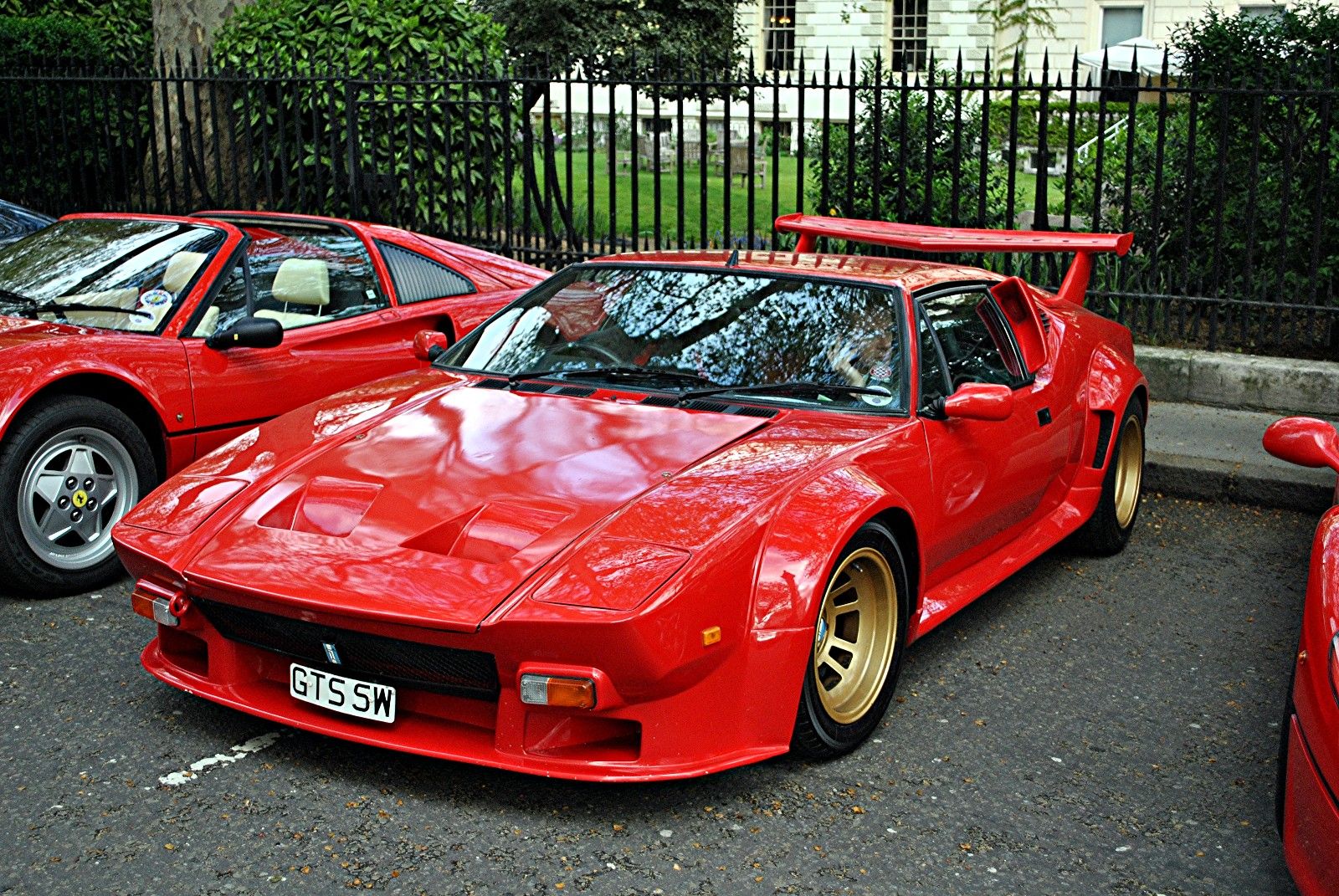
13. **De Tomaso Pantera GT5**: The De Tomaso Pantera always represented a compelling fusion of automotive cultures: striking Italian supercar aesthetics gracefully embracing the robust, bulletproof heart of an American V8. While the Pantera had a storied history dating back further than many on this list, its GT5 variant from the 1980s truly elevated its status, introducing aggressive widebody styling and a level of power that allowed it to decisively outperform many contemporary Ferraris, often at a significantly lower maintenance cost, a practical advantage few supercars could claim.
Beneath its sensuous lines, the GT5 housed Ford’s venerable 351 Cleveland V8 engine, producing not just immense power but also a captivating acoustic experience that resonated deeply with drivers. The Pantera’s distinctive styling continues to command attention and drop jaws even today, embodying a near-perfect marriage of audacious Italian design flair and the rugged reliability characteristic of American muscle. Yet, despite its undeniable performance prowess and iconic design, its hybrid identity and, at times, inconsistent build quality prevented it from achieving the consistent, unblemished prestige of its European rivals, relegating it to a fascinating, yet often overlooked, chapter in supercar history.
Car Model Information: 2024 Genesis GV70 2.5T AWD
Name: De Tomaso Pantera
Caption: De Tomaso Pantera GT5-S
Manufacturer: De Tomaso
Assembly: Modena
Production: 1971–1992 (7,260 produced)
Designer: Tom Tjaarda,Marcello Gandini
Class: Sports car
BodyStyle: coupé
Layout: Rear mid-engine, rear-wheel-drive layout
Engine: ubl
Abbr: on – later spec
Order: Ford small block engine#351W
Transmission: Manual transmission,List of ZF transmissions
Wheelbase: 2500 mm
Length: 158 in
Disp: flip – later spec
Width: 67 in
Height: 1100 mm
Weight: 1474 kg
Predecessor: De Tomaso Mangusta
Successor: De Tomaso Guarà
Categories: 1980s cars, 1990s cars, All Wikipedia articles needing clarification, Articles with hAudio microformats, Articles with short description
Summary: The De Tomaso Pantera is a mid-engine sports car produced by Italian automobile manufacturer De Tomaso from 1971 to 1992. Italian for “Panther”, the Pantera was the automaker’s most popular model, with over 7,000 manufactured over its twenty-year production run. More than three quarters of the production were sold by American Lincoln-Mercury dealers from 1972 to 1975; after this agreement ended De Tomaso kept manufacturing the car in ever smaller numbers into the early 1990s.
Get more information about: De Tomaso Pantera
Buying a high-performing used car >>>
Brand: De Tomaso Model: Pantera
Price: $39,995 Mileage: 20,074 mi.
Read more about: Unearthing the Gems: 14 Rare Cars of the 1970s That Defined an Era of Power and Panache

14. **Noble M12**: Handcrafted in England, the Noble M12 GTO-3R offered an uncompromised, raw driving experience that directly challenged the established order of performance cars. While its bigger brother, the M600, pushed boundaries, the M12 carved its own niche with a twin-turbo Ford V6 engine, producing a potent 352 horsepower. This power, combined with its lightweight construction, allowed the M12 to deliver Ferrari-slaying speed, demonstrating that raw, focused engineering could triumph over sheer engine displacement and brand legacy.
Hitting 60 mph in a blistering 3.3 seconds, the Noble M12 effortlessly outpaced even acclaimed models like the Ferrari 360 Modena, a testament to its exceptional power-to-weight ratio and finely tuned dynamics. However, its appeal was intentionally niche; a barebones interior emphasized the driving experience over luxury, and its limited production numbers meant it rarely encountered the mainstream. The M12 thus remained an enthusiast’s secret, a purebred performance machine appreciated by those who valued driving purity and unadulterated speed over marketing glitz and extensive creature comforts, truly a hidden champion in the supercar realm.
Read more about: 10 Rare British Cars: Unearthing Icons of Innovation and Engineering Excellence
In the fast-paced, often-flashy world of supercars, it’s easy for the spotlight to linger solely on the well-known titans. Yet, as we’ve seen, the shadows conceal an equally impressive roster of machines that, through sheer engineering brilliance, audacious design, or uncompromising performance, outran their more famous peers. These hidden gems, though perhaps missing the widespread adoration, represent critical chapters in automotive innovation. They remind us that the pursuit of speed and mechanical artistry is a diverse and relentless endeavor, one where the greatest stories are often found where you least expect them—quietly, powerfully, and undeniably fast, defying the very notion of what it means to be truly recognized.


